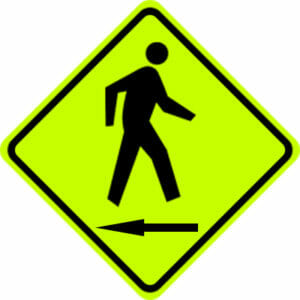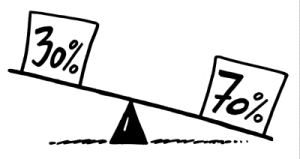You have done all the hard work to prospect for business. Then, you tackled landing a meeting. You listened, overcame objections, and explained the features and benefits carefully. Now, it’s time for the close—the make-or-break moment in the sales process.
Closing techniques are numerous, but choosing the right ones will help you reach your sales goals. However, not all sales closes are created equal. Some fit certain selling situations better than others. That’s why reps need to be equipped with a set of proven closing techniques adaptable to any selling situation.
We get it. Sales reps are under a lot of pressure to get sales or to close the deal. That’s why we’ve put together a list of 19 battle-tested closing techniques for sales, from the summary close to timeshare sales closing techniques. With our list of effective closing techniques, reps can sign more deals in a variety of different scenarios.
19 Field-Tested Techniques to Close More Sales in 2020
Winning the deal is not an easy thing to do. It requires reps to tailor their approach by delivering their pitch in a way that is more likely to resonate with that individual prospect. This is why there is a wide array of ways you can close a deal.
Here are 19 proven sales closing techniques every rep should consider:
The Now or Never Close
The Option Close
The Something For Nothing Close
The Assumptive Close
The Inoffensive Close
The If I – Will You Close
The Backwards Close
The Puppy Dog Close
The Scale Close
The Hard Close
The Summary Close
The Take Away Close
The Question Close
The Ben Franklin Close
The Impending Event
The Objection Solicitation
The Probe for Opinion Close
The 70/30 Rule
The Needs Close
Closing Technique #1: The Now or Never Close
The Now or Never Close is a traditional sales close that promises extra benefits if the prospect acts now. It works well when the candidate is having a hard time moving to yes; they are interested, but still not sold.

When you add in the extra benefit, you create a sense of urgency. However, you avoid being pushy by presenting value before you make your Now or Never offer. In other words, they move from interested to sold with the extra little nudge you give them with the “special, limited-time offer.”
The Now or Never Close might sound like this:
“I know you have been thinking about making the switch from your existing widget to ours for a while now. I have a special deal that might make it easier for you. If you switch to our widget today, I can include a premium support package for 12 months as a special thank you. But act fast! This offer is only available until the end of business day today.”
Closing Technique #2: The Option Close
The Option Close is a traditional sales closing technique that has the prospect choose between products you offer. It is best for situations where you feel easing the prospect into the closing process would be beneficial to the relationship.
The option ‘close’ offers 2 options for a client to choose (both are ‘yes’.)
| Example of what you should do: We could do the first installment at the end of this week or the beginning of next. What works best for you?
| Example of what you shouldn’t do: So, do you want to buy these widgets?
Rather than asking for the business (and possibly pushing them to buy too early), you are only asking which program they prefer. The prospect then moves forward in the buying process with less reluctance and pressure. After all, they are only choosing which program they would buy.
This effective closing technique is closely related to the Assumptive Close.
The Option Close might sound like this:
“Well, now that you know what’s available, which package of widgets do you like better, the starter package, the complete package, or the premium package?”
Closing Technique #3: The Assumptive Close
When what a sales person is selling check all the boxes on what the prospect is looking for, a rep assumed this deal is as good as done. This is a good technique because it gently nudges the prospect to move foward by not giving them time to come up with reasons why they should not purchase your service/offering.
“How about next Monday to get your onboarding process started?”
Closing Technique #4: The Something for Nothing Close
Good deeds don’t go unnoticed, which is the the premise around this technique. Waiving a fee or offering a discount will be very much appreciated and entice them to make the purchase. People like free things; which is why this is a proven technique.
“We are confident our service is what you’re looking for, so much so that we’d like to offer a 15% discount. Does this work for you?”
Closing Technique #5: The Inoffensive Close
The Inoffensive Close uses questions to ease a client into a yes. The questions are crafted to assert your knowledge, confirm value for the prospect, and suggest a next step. It works well with prospects that are resistant to giving up control or prefer a process over abrupt action. Because the method uses a question and answer format, it gives the buyer the control to direct the conversation.
The Inoffensive Close might sound like this:
“What I learned from today in our discussion was that you have some areas where we could help bridge the gap for your organization, like the additional production support, the increased access to online resources, the consolidation of your three operations challenges, and a chance to add a new widget option to your line of widget offering. Do you have anything to add that I might have missed based on our discussion today?
- (Assume the prospect says no. Then ask the following in this order)
After our meeting today, do I have a good grasp on what you need?
- Will our widget plan address those needs?
- Do you have another way you want to address those needs?
- If our widget can address those needs and any expectations you might have, are you ready to accept us as your partner to work toward your goals?
Closing Technique #6: The If I – Will You Close
The If I – Will You Close (also called The Sharp Angle Close) is a traditional sales closing technique that gives a prospect what they want but gets you something you want in return (read: the sale).
This closing technique works best when the prospect wants a discount or an additional service for free that is not part of your offer. It works because you are giving them something they asked for, but only if they close the deal today.
The If I – Will You Close serves as a nice blend of accommodation and assertion that makes the prospect feel like they won and gets the deal done for you.
Just be sure you have your sales manager’s approval before you use it!
The If I- Will You Close might sound like this:
“Absolutely, I can give you the widgets on a volume discount. But if I do, can we sign the deal today?”
Closing Technique #7: The Backwards Close
The Backwards Close is a closing technique that turns the sales process around, starting at the end first by asking for referrals.
Usually, the referral request is after the close, meant to capitalize on the positive feelings surrounding the new relationship between you.

However, The Balance Careers says this useful closing technique puts prospects at ease because they feel like you aren’t trying to sell anything. Once you start talking, however, you can work back to the qualifying stage as you describe your organization’s features and benefits to close the sale.
The Backwards Close might sound like this:
“Do you know of anyone that could benefit from our widgets? I would love to discuss how we can help them grow their business. Our proprietary design automates and increases repeat sales by 20% without adding additional staff.”
Closing Technique #8: The Puppy Dog Close
The Puppy Dog Close is an effective method that uses a prospect’s love of the product to get them to buy it. It builds on the idea that few people who take a puppy home for a few days will give the puppy back.
If you can “test drive” or “try before you buy,” then you give the prospect a chance to use your product and fall in love with it.
You aren’t pushing them to buy, but taking their order. However, ensure that you can offer a trial run with your sale manager before you suggest it; otherwise, you can be in a bind when the customer gets an invoice they weren’t expecting.
The Puppy Dog Close might start with something like this:
“If you would like to try our widget for a month for free with no obligation to buy, I can ship one to you on Monday. If you don’t like it, just ship it back to me. Would you want to give our widget a shot?”
Closing Technique #9: The Scale Close
The Scale Close is a closing technique that helps you transition from the qualifying stage into the closing stage. Per the Klenty blog, it allows you to determine how interested your prospect is in moving forward or if there is another objection you need to overcome.
Not only does it let you know where you are in the sales process, but it also guides you to a next step that meets your prospect’s needs.

The Scale Close might sound like this:
“If five meant you were really interested in our widget and one meant you still had questions, how interested are you in our widget?”
(Assume the prospect gives you a four.)
“Okay. That’s great. Can you tell me why a four?
(The prospect tells you some design features of the widget he or she likes.)
Yes, most of our clients like those features, too. So why don’t you give me a five?
(Assume the prospect gives you a price objection.)
“Ah! That’s understandable. I have had other clients that were reluctant to switch to our widgets to, but they found that the value they provided more than paid for themselves in the first two months.”
Closing Technique #10: The Hard Close
The Hard Close is an accounting technique that means the organization “closes the books” after a set time. A hard close can be every month or quarter, or even at the end of the year. Hard closes can help sales reps make last-minute deals with prospects that are lingering near the end of the sales cycle.
Since the hard close is outside the sales reps’ control, it creates a deadline for a decision. Often, a sales manager will also throw in a couple of incentives to sweeten the deal and encourage a close when approaching a hard close deadline.
The Hard Close could sound like this:
“I just got word that our accounting department is closing the books at the end of the week. After that, we move to the new pricing/product/package plans. Would you like to take advantage of the widget plan we put together before the bean counters close the books on us?”
Closing Technique #11: The Summary Close
The Summary Close is a tried and true sales closing technique that involves reiterating all the features and benefits of your offer before you ask for the order.
This method helps move prospects to yes when they are distracted, choosing between several products or managing several different purchases for the company.
It can also be handy if you have been in a longer sales cycle and the presentation might have been some time ago.

This technique helps the prospective buyer visualize what they are buying and how it will serve his or her needs.
The Summary Close sounds like this:
“So, with our widget, the reduced size makes it easy to fit into small spaces, and with the improved battery life, it can standby for up to four days without charging. In addition, we offer the service plan free for all new widget users to help you learn how to integrate all the features into your business.”
Closing Technique #12: The Take Away Close
The Take Away Close involves reviewing features of your offer and then suggesting that the prospect forgo some of the elements to save money (or time, or hassle, etc.). It plays upon the fact that we, as humans, hate to lose something, whether we own it yet or not.
The Balance Careers suggests that taking something away can make customers want to move ahead with the sale, so they don’t lose anything on their wish list.
The Take Away Close might work like this:
“I know we discussed the wireless version of the widget, but for how you intend to use the widget, the wireless function might not be necessary. Also, the portable charger wouldn’t be vital either since you will primarily use it in one place. What you lose in versatility saves you a few dollars every month. What do you think?”
Closing Technique #13: The Question Close
The Question Close uses questions to create solutions for the prospect while uncovering the prospect’s objections. It builds upon the qualifying process that effective salespeople use to close sales.
It’s an excellent sales closing technique to use with prospects that play their cards close to their vest. This tactic to draws them out with opportunities you’re pursuing while learning about their business and their challenges.
Hubspot says, you can use a question for the close itself; doing so allows you to either get down to business or address any additional concerns the prospect might have.

The Question Close could go like this:
“Well, now that you understand the features of the widget, do you agree that it solves your problem?”
(If yes, then move to the closing details. If no, then ask why it fails to solve the problem.)
Closing Technique #14: The Ben Franklin Close
If you have ever made a pros and cons list, you are familiar with the concept behind the Ben Franklin Close. Per the Chron, the founding father was known to make the two lists and then make a decision based on which one was longer.
This closing technique is especially useful with clients who aren’t sure or have trouble making decisions.
It’s imperative that you know you have more pros than cons if you are going to attempt to use it to get a sale.
The Ben Franklin Close might sound like this:
“So, as you can see, the pros of our widget are that it is compact, versatile, and can address the efficiency issues you have been having in production. The cons are that it will have a learning curve for the team and your current widget is relatively new. Although, a new widget that works is a far better investment than holding on to a widget you already have that creates production hold-ups. So really, we are just looking at the learning curve here.“
Closing Technique #15: The Impending Event
The Impending Event refers to the sales closing technique that uses a deadline or a time-limited opportunity to close the business if the client can make a quick decision. Maybe you have a new model coming out next month that changes one of the features the client likes or there was a cancellation in the install schedule that presents an opportunity for a new customer to jump ahead in line.
This close requires care because if the impending event serves you or your organization better than the prospect, it won’t be effective and could jeopardize the close altogether.
An Impending Event Close might sound like this:
“I just found out that one of our other accounts had to push back their install a month. We have a spot in our schedule for the team to come to install the new widgets next week instead of in six weeks as I told you before. Should I get you on the schedule?
Closing Technique #16: The Objection Solicitation
Closely related to the Question Close is the Objection Solicitation. It is similar in that it uses a question to move the sales process forward; the difference is that with the Objection Solicitation, you ask a specific question that gets any reservations the prospect has out in the open. Then the salesperson knows what hidden objection is keeping the customers from saying yes and can address his or her concern.
This closing technique is useful for sales cycles that seem to have stalled or for prospects that appear reluctant to make a decision.
The Objection Solicitation is straightforward and will sound like this:
“Is there any reason we can’t get your first shipment of widgets over to you this month?”
Closing Technique #17: The Probe for Opinion Close
This is where the salesperson asks the prospective client his or her opinion of the product or service. Many effective closing techniques use questions to get at any obstacle that is precluding the sale, and the Probe for Opinion is one of them.
When you ask a client what they think, you get to hear any issues early on so you can address them sooner rather than later, speeding up the closing cycle. This closing technique is effective when the salesperson wants to build a relationship and connect to the prospect.
Asking for an opinion makes your future client feel that you understand them.
A Probe for Opinion Close could go like this:
“I see that you have been looking at the clasps on the widget. They are our patented quick release fasteners. What do you think of them?”
Closing Technique #18: The 70/30 Rule
The 70/30 rule refers to how much talking during the conversation in which the prospect and the salesperson participate. The potential customer should do 70% of the talking and the salesperson, only 30%.

This ratio is what Leadfuze refers to as a healthy balance. It works because when the prospect is talking, you are learning what you need to address to get their agreement.
Active listening is the key to success here, both for the sale and for the relationship between you and your future client.
The sales training firm Sandler Training uses the Sandler Pain Funnel to illustrate how to keep the prospect talking and uncovering their “pain points.”
Closing Technique #19: The Needs Close
When you can find the how your product/service fills the need of a prospect, a close is almost imminent. Before your call, have the prospect send over a list of what they need from a solution.
From here, go down that list and mark off all the needs you can fulfill. If they’re still not biting, ask them a simple question:
By fulfilling these needs, how much money will be saved and ROI will be achieved?
This is a quick and easy way to show how your product will help them; proving your value.
There is almost no sales situation where this method will not work and you can implement it in combination with any of the previous sales closing techniques.
Ready. Set. Close
The most effective salespeople know their closes. Furthermore, they know the A, B, C of Sales: to Always Be Closing. The close is essential to your success. It is the make-or-break moment in the sales process.
The 19 sales closing techniques we presented are the most useful tools to help you get the sales you need to have the success you want. After all, you did all the work to get the prospect, qualify him or her, and then set up the close.
Now you are ready to go for it. With each of these in your armamentarium, you have the right close for any prospect for every situation you could encounter.
______
SPOTIO is the #1 field sales engagement and performance management software that will increase revenue, maximize profitability, and boost sales productivity.
___________
Sources:
Wiggins, Adam. “6 Sales Closing Techniques and Why They Work.” Blog.hubspot.com. Web. 22 August 2018. Web. <https://blog.hubspot.com/sales/sales-closing-techniques-and-why-they-work>.
McConnachie, Claire. “Top 4 Sales Closing Techniques.” www.salesforcesearch.com. Web. 22 August 2018. Web. https://www.salesforcesearch.com/blog/top-4-sales-closing-techniques/.
Signorelli, Brian. “3 Effective Sales Closing Techniques for Modern Sales Reps.” Blog.hubspot.com. Web. 22 August 2018. https://blog.hubspot.com/sales/effective-sales-closing-techniques-for-modern-sales-reps.
Phelps, Thomas. “Closing Sales Techniques.” www.thebalancecareers.com. 27 June 2018. Web. 22 August 2018. <https://www.thebalancecareers.com/closing-sales-techniques-2918610>.
“Modern Sales Closing Techniques to Help You Close More Deals.” Blog.klenty.com. 5 July 2018. Web. 22 August 2018. https://blog.klenty.com/sales-closing-techniques/.
“A Hard Look at the Hard Close.” www.cougarmtn.com. Web. 22 August 2018. https://www.cougarmtn.com/blog/a-hard-look-at-the-hard-close/.
Metcalf, Thomas. “Top 10 Sales Closing Techniques: Learn How to Seal the Deal.” Smallbusiness.chron.com. 26 June 2018. Web. 23 August 2018. < https://smallbusiness.chron.com/top-10-sales-closing-techniques-learn-seal-deal-70629.html>.
Maceda, Kimberly. “Sales Closing Techniques: 4 Strategies to Help You Close More Deals.” www.leadfuze.com. Web. 23 August 2018. < https://www.leadfuze.com/sales-closing-techniques/>.




